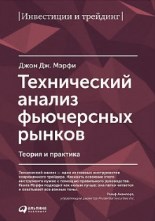Technical analysis of futures markets. Murphy John J.
Many traders who started their careers in the forex market then switched to futures trading.
Since, according to the majority of those trading on the stock exchange, this market is much easier to predict, and therefore easier to make a profit.
Unfortunately, most of the information describing various trading methods is devoted to trading on the currency or stock exchange.
Finding recommendations for futures trading is quite difficult; John Murphy’s book, Technical Analysis of Futures Markets, can help in this matter.
The author of the book has long been familiar to a wide range of readers for his works on trading on the stock exchange, and among investors as the manager of the hedge fund MurphyMorris Money Management Corp.
On our website you have already become acquainted with another of his books - Virtual Investor .
1. Philosophy of technical analysis – what is the technique of technical analysis, comparison of its application in different types of markets.
2. Dow Theory - the essence of the theory, options for its application in practice and criticisms that should be taken into account.
3. Construction of graphs - what types of graphs can be found, how to construct them yourself, the pros and cons of ready-made and independently created graphs.
4. Trend – a trend through the eyes of the author of the book, main directions, support and resistance lines, calculation of the size of the correction.
5. Basic reversal patterns – here we will talk about the use of graphical reversal patterns when trading futures.
6. Trend continuation models - which of the graphic figures on the chart indicate the continuation of the existing trend.
7. Volume and open interest - the importance of the volume of transactions made and how they help predict the trend.
8. Long-term charts and indices of commodity markets - why you need to conduct long-term trend analysis and how to conduct it.
9. Moving average – the principles of constructing moving averages and on the basis of what data they are calculated.
10. Oscillators and the reverse method - how similar price forecasting tools work, ways to effectively use oscillators in stock trading.
11. Chapters 11-14 continue to describe the various techniques of technical analysis that are used to study the market.
12. Computers and trading systems are the main tools used in trend analysis, the use of mechanical trading systems.
13. Capital management and trading tactics - what principles should be followed when planning the risk of transactions.
14. Additional information – helping to understand some issues.
This book is often called a classic of technical analysis; it is perhaps one of the best textbooks on this topic. It will be useful when trading on any of the financial or commodity markets.
You can download the book in one of the online stores
